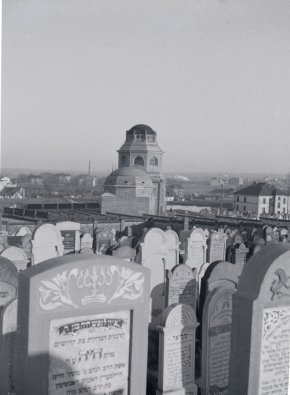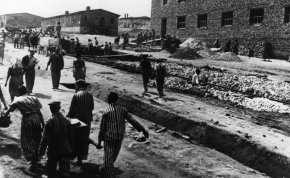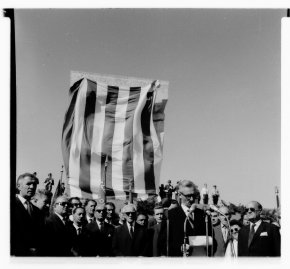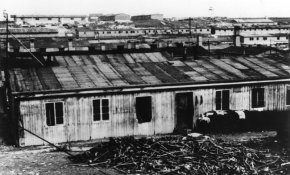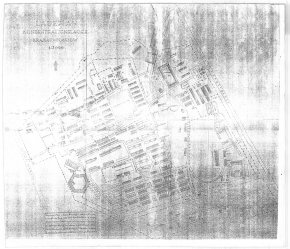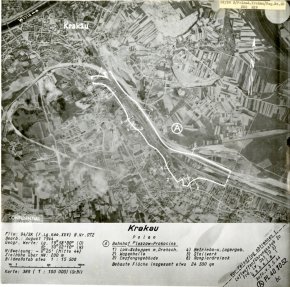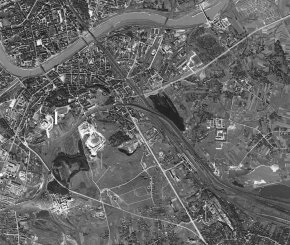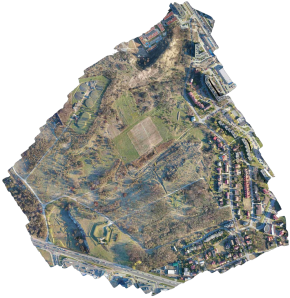Collections and multimedia
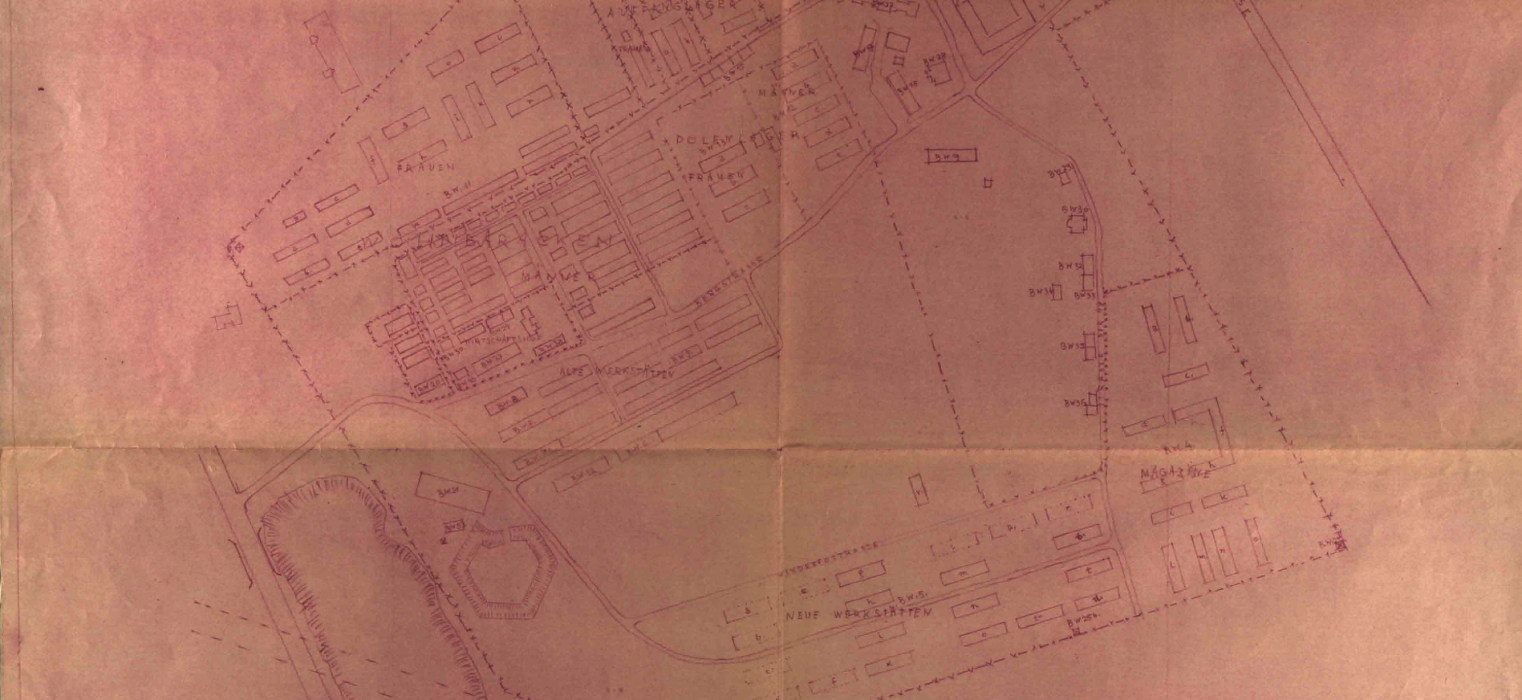
The KL Plaszow Museum, as an institution established in 2021, has limited resources and collections. The most important collection of historical objects relating to KL Plaszow contains artefacts revealed during archaeological surveys. The objects are kept in the Kraków Museum and analysed in cooperation with the KL Plaszow Museum. If you wish to provide information about or donate objects, please contact us.
MENU
Archive
Archive
At present, the Museum has no original archive materials relating to the prisoners of KL Plaszow.
The archive of KL Plaszow was almost entirely destroyed during the liquidation of the camp. Preserved historical materials relating to KL Plaszow can be found in institutional and private archives. The largest collections of archive materials are held by the Institute of National Remembrance, Jewish Historical Institute, World Holocaust Remembrance Center (Yad Vashem), United States Holocaust Memorial Museum in Washington, Arolsen Archives – International Center on Nazi Persecution (formerly the International Tracing Service).
During research conducted to date, the KL Plaszow Museum acquired from the above institution digitalized versions of prisoners’ accounts, official camp documents, lists detailing transports from and to the camp, prisoners’ records and lists, building plans, secret messages, prints from other camps and displacement locations (personal data, time sheets, certificates of death), information and records from aid organizations, such as the Central Welfare Council, JUS and the Council to Aid Jews.
The collected materials, enabling the KL Plaszow Museum to carry out its research projects, are organized, expanded and processed to build up the KL Plaszow Digital Archive.
The archive of KL Plaszow was almost entirely destroyed during the liquidation of the camp. Preserved historical materials relating to KL Plaszow can be found in institutional and private archives. The largest collections of archive materials are held by the Institute of National Remembrance, Jewish Historical Institute, World Holocaust Remembrance Center (Yad Vashem), United States Holocaust Memorial Museum in Washington, Arolsen Archives – International Center on Nazi Persecution (formerly the International Tracing Service).
During research conducted to date, the KL Plaszow Museum acquired from the above institution digitalized versions of prisoners’ accounts, official camp documents, lists detailing transports from and to the camp, prisoners’ records and lists, building plans, secret messages, prints from other camps and displacement locations (personal data, time sheets, certificates of death), information and records from aid organizations, such as the Central Welfare Council, JUS and the Council to Aid Jews.
The collected materials, enabling the KL Plaszow Museum to carry out its research projects, are organized, expanded and processed to build up the KL Plaszow Digital Archive.
Witness accounts
The largest collections of accounts given by the prisoners of KL Plaszow are contained in the archives kept by the Jewish Historical Institute, Institute of National Remembrance, Yad Vashem and Shoah Foundation. They include principally accounts and testimonies given by the prisoners of KL Plaszow as of 1945 before the Jewish Historical Committee, also during the trials of camp personnel, and relations recorded thereafter (documents in handwriting and typewriting, audio and video recordings).
Photographs and videos
The collection of photographs taken in the time of camp operation is held by five institutions: the Institute of National Remembrance, Yad Vashem, US Holocaust Museum in Washington, Ghetto Fighters’ House and Jewish Historical Institute. Most of the photographs (about 250 in total) were taken in 1944. Their subjects vary: some photographs represent wide shots of the camp, other document scenes from everyday camp life, depicting e.g. the prisoners at work or receiving meals, and personnel of KL Plaszow.
They are supplemented with pictures taken prior to the camp establishment. The earliest photographs, dating back to the 1930s, depict Jewish cemeteries in Podgórze and the construction of the Funeral Home at the Jewish cemetery of the Kraków community. They are contained in the collections held by the Jewish Historical Institute, Kraków Museum and National Archive in Kraków. The archives kept by the Institute of National Remembrance, Yad Vashem, US Holocaust Museum in Washington, Ghetto Fighters’ House and Jewish Historical Institute also contain photographs depicting the post-camp area after World War II.
KL Plaszow was also captured on film. Tadeusz Franiszyn, a soldier of the Home Army, secretly filmed the area of KL Plaszow in liquidation twice, in September 1944 and January 1945. A copy of the video is contained in the collections kept by Kraków Museum.
They are supplemented with pictures taken prior to the camp establishment. The earliest photographs, dating back to the 1930s, depict Jewish cemeteries in Podgórze and the construction of the Funeral Home at the Jewish cemetery of the Kraków community. They are contained in the collections held by the Jewish Historical Institute, Kraków Museum and National Archive in Kraków. The archives kept by the Institute of National Remembrance, Yad Vashem, US Holocaust Museum in Washington, Ghetto Fighters’ House and Jewish Historical Institute also contain photographs depicting the post-camp area after World War II.
KL Plaszow was also captured on film. Tadeusz Franiszyn, a soldier of the Home Army, secretly filmed the area of KL Plaszow in liquidation twice, in September 1944 and January 1945. A copy of the video is contained in the collections kept by Kraków Museum.
Cartography, plans, aerial and satellite photographs
Maps of ZAL and KL Plaszow are kept in the archives of the Institute of National Remembrance and Yad Vashem. The maps were drawn in various phases of camp operation, and in part for the purposes of trials against camp personnel.
The collection held by the German Federal Archive in Koblenz contains documentation of camp buildings, made by the prisoners in 1943–1944 (plans for expanding the transformer station, a barrack and the petrol depot). Freehand sketches and maps are attached to some witness accounts kept in the Jewish Historical Museum.
The National Archive in Kraków contains documentation produced prior to the camp establishment, representing e.g. structures forming the Kraków Fortress, Jewish cemeteries and private houses.
All known aerial photographs taken in the years 1939–1945 are currently contained in the National Archives of the United States. They depict spatial development and changes f KL at various moments of its operation. They are supplemented with available materials showing the post-camp area after World War II.
The collection held by the German Federal Archive in Koblenz contains documentation of camp buildings, made by the prisoners in 1943–1944 (plans for expanding the transformer station, a barrack and the petrol depot). Freehand sketches and maps are attached to some witness accounts kept in the Jewish Historical Museum.
The National Archive in Kraków contains documentation produced prior to the camp establishment, representing e.g. structures forming the Kraków Fortress, Jewish cemeteries and private houses.
All known aerial photographs taken in the years 1939–1945 are currently contained in the National Archives of the United States. They depict spatial development and changes f KL at various moments of its operation. They are supplemented with available materials showing the post-camp area after World War II.
The KL Plaszow Memorial Museum in Kraków
The German Nazi Labour and Concentration Camp (1942–1945)
The KL Plaszow Museum is a cultural institution of Kraków City and is co-managed by the Ministry of Culture and National Heritage
This website uses cookies to provide its services in accordance with the Cookies Policy. You can specify the conditions for storing or accessing the cookies mechanism in your browser.
